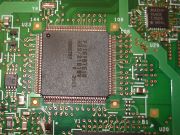Dear Lenovo,
In your latest BIOS you've added into OperationRegion GNVS a flag called LINX which is only set high if the OSI name is “Linux”. I assume this is to tell the EC0 to do something different just for the Linux case. I'm guessing it is not to move brightness changes from EC level to ACPI layer (as I've tried that and it still doesn't work) so I'm a bit confused. Please tell us what it does.
Also, I've noticed your new public release BIOS does not include the trivial changes that I sent to your BIOS engineers regarding reading and exporting the present battery voltage, design voltage, and design capacity. I'm sure you are aware this breaks completely the remaining time calculation on Windows XP and reduces the accuracy in Linux by about 20% (as we have to guess the values).
Plus, the release notes with the new BIOS were not exactly helpful in explaining the changes. At the moment, I'm stuck with a laptop that won't let me change the screen brightness automatically, and with wildly inaccurate remaining charge notifications. Does that count as defective?
Many thanks,
Richard Hughes




